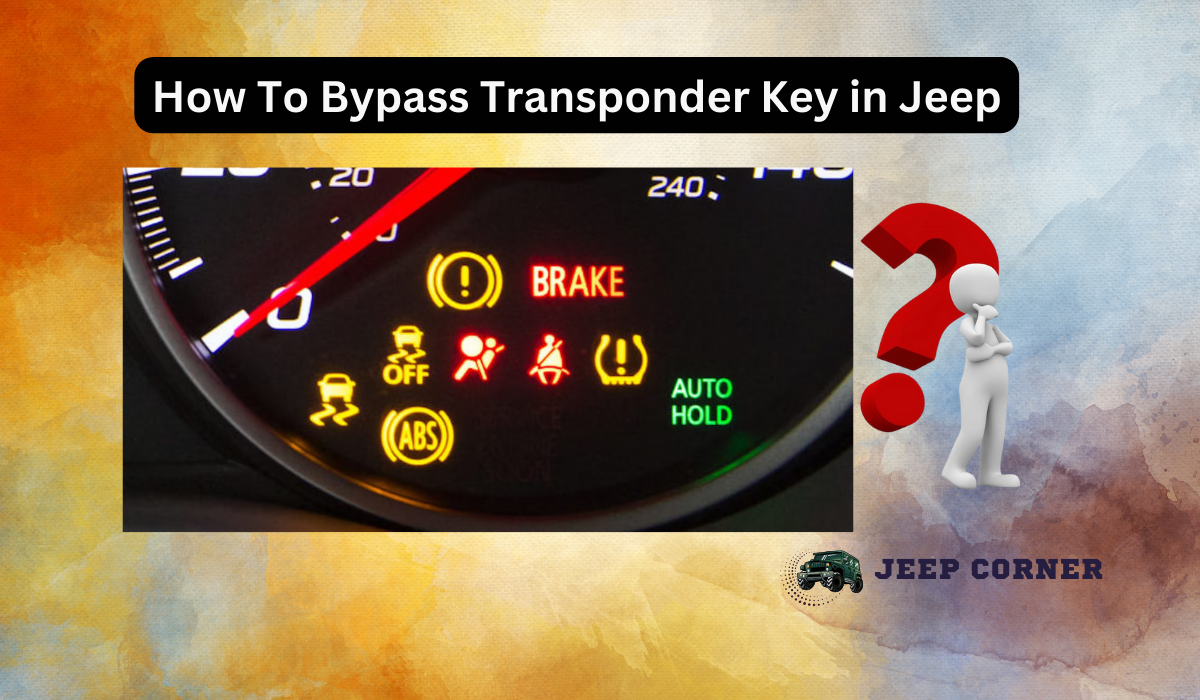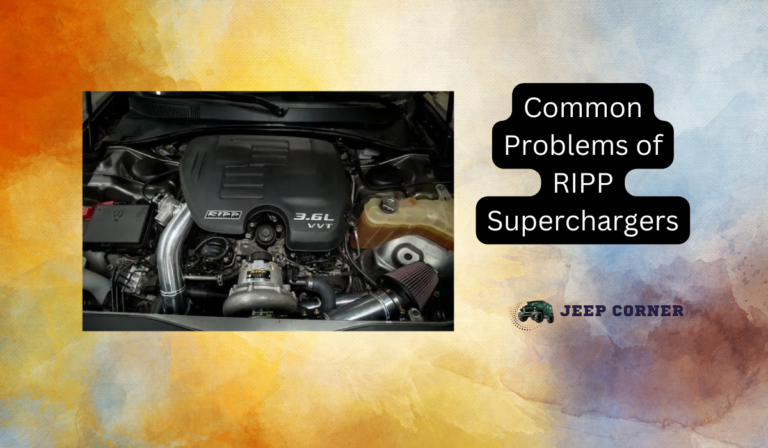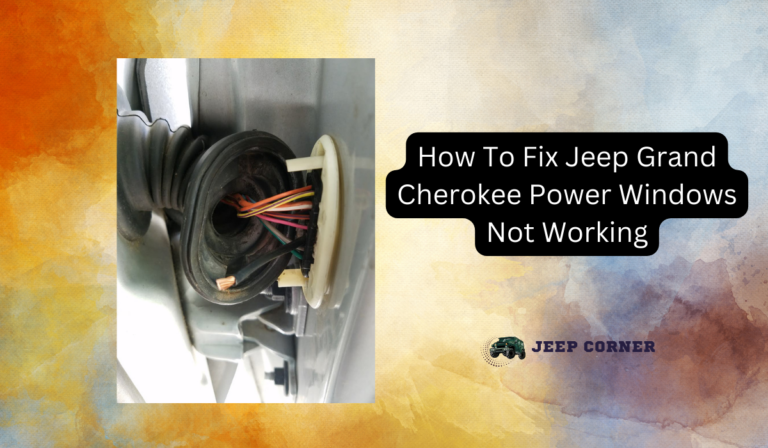How To Bypass Limp Mode In Jeep? (Step-By-Step)
The vehicle goes into limp mode whenever your jeep computer system gives an emergency signal indicating a transmission failure. Automatically the car gets into a foolproof mode to protect the vehicle and its accessories from further damage. You have to bypass the limp mode to continue driving.
So, how do you bypass limp mode in a jeep? Bypass the limp mode by disconnecting the swirl flap motor and installing a resistor that sends back an okay signal to the computer. To fix the limp mode, you have to replace all the parts affected, which is expensive.
This article gives a step-by-step process of how to bypass limp mode in jeep using simple hacks. In addition, it also provides the possible causes of limp mode activation and how to detect when your vehicle is in limp mode.
Table of Contents
What Are The Common Causes Of A Limp Mode In Jeep?
Below are the common causes of limp mode activation and possible solutions.
| Common Causes Of A Limp Mode | Possible Solutions |
| Too high or low turbo boost pressure | Adjust the pressure to the correct value and fix any leakages causing low boost |
| Faulty engine system sensors | Replace all faulty sensors and fix the cause for failing sensors |
| Transmission problems | Check for transmission fluid level and for automatic vehicles, ensure the gearbox is well lubricated |
| Electrical connection problems | Check all naked and loosely connected wires. Have them replaced or repaired |
| Leaking oil pipes tampering with connections | Repair the broken and leaking pipes |
All these problems can be fixed individually to solve the limp mode effect. However, we can cover bypassing the limp mode instead of fixing it.
Bypassing will give you time to visit the garage or save enough to have the vehicle serviced. Some opt to drive on a bypassed limp mode for years even. However, consider getting a complete fix to the problem to keep your engine protected.
What Are The Indicators Of A Limp Mode In Jeep?
The computer activates limp mode to protect against further damage to the engine. Once on limp mode, the following happens to your jeep.
- Limited engine revolutions to a maximum of 3000 RPM
- Reduced acceleration
- Overheating engine
- Transmission won’t shift from one gear to another
- Limp mode light on
Once you notice any of these conditions, fix or bypass the limp mode quickly. Below is an image of the limp mode sign.
How To Diagnose Limp Mode?
To bypass limp mode, it is advisable to diagnose the problem to avoid trial-and-error fixes. Fixing a problem that you are aware of gets easier and saves time. Follow the below procedure to analyze limp mode.
- Connect a scanner, preferably the OBD-II scanner, and inspect the trouble codes displayed by the computer. The trouble code is always stored in the engine control module for reference
- Note down the codes and research them for further troubleshooting information
- Inspect the boost pressure sensor and check if it gives the correct reading while idling and revving
- Test the wastegate using a pressure gauge and ensure the sensor and the wastegate are okay. If not, replace the wastegate
- Check for leakages on the turbo inlet pipe and repair them appropriately
- Check for any faulty sensors on the system
If you can’t fix all the problems on your jeep, you can bypass the limp mode using the steps below on how to bypass limp mode in jeep.
How To Bypass Limp Mode in Jeep? (step-by-step)
It would be best to have the computer programmed to detect that the swirl flap motor is running fine. You can do it yourself without the help of a professional. Get the following tools and equipment to help bypass the limp mode.
- Resistor (4.7k ohms)
- An emulator
- Screwdriver
- Torque wrench
- Black tape
- Hand gloves
Follow these steps carefully to do it yourself.
Step 1 – Park The Car And Turn It Off
Get off the road on low gear and park the vehicle ready to fix the limp mode. Turn off the engine to avoid messing up with the electrical system during the fix. Open the hood to gain access to the machine and its accessories.
Step 2 – Remove The Engine Cover
To gain access to the motor connection, remove the engine cover by loosening the 10mm bolts on top of the cover. Unscrew the bolts carefully using a torque wrench.
Pull the cover by sliding it to the front to avoid dismantling the cable connections.
Step 3 – Remove The Turbo Inlet Pipe
To further pave the way for bypassing the limp mode, remove the pipe by loosening the jubilee clips held by 7mm bolts and unscrewing the 10mm bolt at the far front end.
Be careful not to break the plastic pipe while unscrewing. Use a hand torque wrench with the appropriate socket. On the back end of the tube, disconnect the smaller exhaust pipe and hold it back off the way.
Step 4 – Disconnect The Feeder Connector From The Motor
Disrupt the connector terminal by pulling the clips upwards using a flat screwdriver. The clip has four terminals connecting the computer to the motor.
From this point, you can bypass the limp mode by using a resistor or use an emulator with a resistor. Both methods will work, but an emulator will cost you much more.
Step 5 – Bypass The Limp Mode
Depending on what you have at your exposure, have the computer fed back with a signal of a resolved motor problem without actually fixing it.
Method 1: Connect An Emulator
The emulator has a preinstalled resistor that is easy to connect. Check on alignment and have the emulator fixed to a tight clip. A sound will be made once the emulator is correctly fixed.
You can cover the emulator with tape to make it fully waterproof. Place it at a point where oil leakages can’t interfere with it.
Method 2 – Connect A Resistor
If you don’t have access to an emulator, you can use a 4.7k ohms resistor of your choice. Have it fixed on the two middle terminals and reverse back the connection. To keep it in place, wrap it with black tape to ensure oil leakages don’t come in contact with it.
With the emulator or the resistor connected, place back the turbo inlet pipe and the engine cover. Tighten the bolts to a good torque for the plastic parts to avoid breakage.
Turn on the engine, and the limp mode sign should have disappeared. If not, drive for a few kilometers and check if the light has faded. You can connect a scanner to clear the data history and have the engine management light system off.
There you go! You are back on track and can accelerate beyond 3000 RPM now. For a complete fix, replace the motor and repair all the leaking pipes to extend the engine lifespan.
Conclusion
Once your computer indicates the engine management light and goes limp mode, scan the trouble codes using an OBD-II scanner. Search for the troubleshooting options from the internet and fix the problem accordingly.
However, fixing may only be the solution if you have all the tools and equipment. Go for a quick bypass trick to allow you to get to a mechanic or drive while in bypass mode.
Use a 4.7k ohms resistor or emulator to trigger a programmed message to the computer that the system is okay. Follow the above processes step by step on how to fix bypass limp mode in jeep.
You may also like
-
All You Need To Know About Jeep 3.8 Engine Replacement Cost
-
10 Common Jeep Engine Problems with Solution
-
How To Reset Check Engine Light On Jeep Wrangler: 6 ways
-
Do All Jeeps Have Hidden Animals? Discover the Surprising Truth!
-
How to Tell If Leaf Springs Are Bad: Signs You Can’t Ignore
-
How to Inspect Control Arm Bushings: Easy Steps for Safe Driving





![How To Fix ESP BAS Light on Jeep Liberty [5 Causes & Solutions]](https://jeepcorner.com/wp-content/uploads/2023/11/How-To-Fix-ESP-BAS-Light-on-Jeep-Liberty-5-Causes-Solutions-768x512.jpg)


